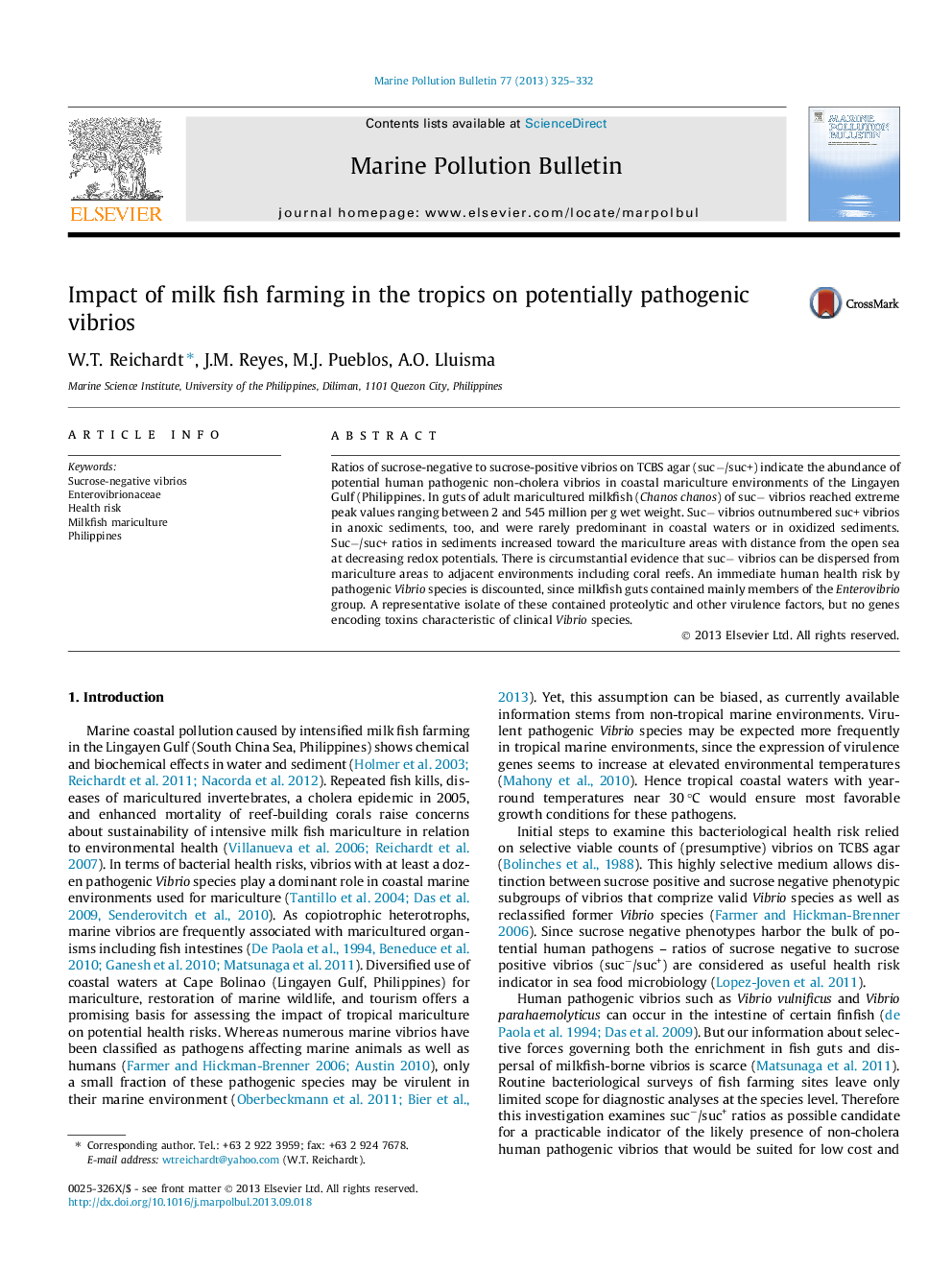| Article ID | Journal | Published Year | Pages | File Type |
|---|---|---|---|---|
| 6359341 | Marine Pollution Bulletin | 2013 | 8 Pages |
Abstract
Ratios of sucrose-negative to sucrose-positive vibrios on TCBS agar (sucâ/suc+) indicate the abundance of potential human pathogenic non-cholera vibrios in coastal mariculture environments of the Lingayen Gulf (Philippines. In guts of adult maricultured milkfish (Chanos chanos) of sucâ vibrios reached extreme peak values ranging between 2 and 545 million per g wet weight. Sucâ vibrios outnumbered suc+ vibrios in anoxic sediments, too, and were rarely predominant in coastal waters or in oxidized sediments. Sucâ/suc+ ratios in sediments increased toward the mariculture areas with distance from the open sea at decreasing redox potentials. There is circumstantial evidence that sucâ vibrios can be dispersed from mariculture areas to adjacent environments including coral reefs. An immediate human health risk by pathogenic Vibrio species is discounted, since milkfish guts contained mainly members of the Enterovibrio group. A representative isolate of these contained proteolytic and other virulence factors, but no genes encoding toxins characteristic of clinical Vibrio species.
Keywords
Related Topics
Physical Sciences and Engineering
Earth and Planetary Sciences
Oceanography
Authors
W.T. Reichardt, J.M. Reyes, M.J. Pueblos, A.O. Lluisma,
